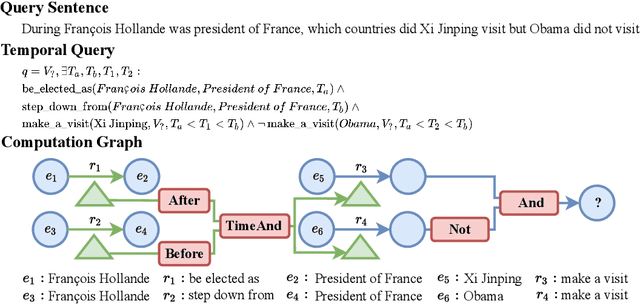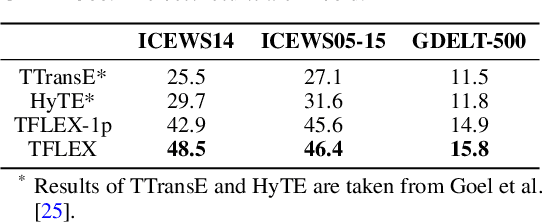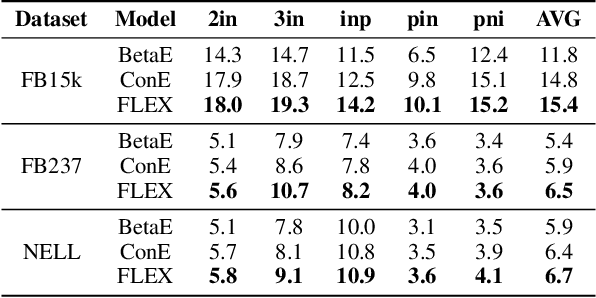Mingzhi Sun
HAHE: Hierarchical Attention for Hyper-Relational Knowledge Graphs in Global and Local Level
May 15, 2023Abstract:Link Prediction on Hyper-relational Knowledge Graphs (HKG) is a worthwhile endeavor. HKG consists of hyper-relational facts (H-Facts), composed of a main triple and several auxiliary attribute-value qualifiers, which can effectively represent factually comprehensive information. The internal structure of HKG can be represented as a hypergraph-based representation globally and a semantic sequence-based representation locally. However, existing research seldom simultaneously models the graphical and sequential structure of HKGs, limiting HKGs' representation. To overcome this limitation, we propose a novel Hierarchical Attention model for HKG Embedding (HAHE), including global-level and local-level attention. The global-level attention can model the graphical structure of HKG using hypergraph dual-attention layers, while the local-level attention can learn the sequential structure inside H-Facts via heterogeneous self-attention layers. Experiment results indicate that HAHE achieves state-of-the-art performance in link prediction tasks on HKG standard datasets. In addition, HAHE addresses the issue of HKG multi-position prediction for the first time, increasing the applicability of the HKG link prediction task. Our code is publicly available.
TFLEX: Temporal Feature-Logic Embedding Framework for Complex Reasoning over Temporal Knowledge Graph
May 28, 2022



Abstract:Multi-hop logical reasoning over knowledge graph (KG) plays a fundamental role in many artificial intelligence tasks. Recent complex query embedding (CQE) methods for reasoning focus on static KGs, while temporal knowledge graphs (TKGs) have not been fully explored. Reasoning over TKGs has two challenges: 1. The query should answer entities or timestamps; 2. The operators should consider both set logic on entity set and temporal logic on timestamp set. To bridge this gap, we define the multi-hop logical reasoning problem on TKGs. With generated three datasets, we propose the first temporal CQE named Temporal Feature-Logic Embedding framework (TFLEX) to answer the temporal complex queries. We utilize vector logic to compute the logic part of Temporal Feature-Logic embeddings, thus naturally modeling all First-Order Logic (FOL) operations on entity set. In addition, our framework extends vector logic on timestamp set to cope with three extra temporal operators (After, Before and Between). Experiments on numerous query patterns demonstrate the effectiveness of our method.
FLEX: Feature-Logic Embedding Framework for CompleX Knowledge Graph Reasoning
May 23, 2022



Abstract:Current best performing models for knowledge graph reasoning (KGR) are based on complex distribution or geometry objects to embed entities and first-order logical (FOL) queries in low-dimensional spaces. They can be summarized as a center-size framework (point/box/cone, Beta/Gaussian distribution, etc.) whose logical reasoning ability is limited by the expressiveness of the relevant mathematical concepts. Because too deeply the center and the size depend on each other, it is difficult to integrate the logical reasoning ability with other models. To address these challenges, we instead propose a novel KGR framework named Feature-Logic Embedding framework, FLEX, which is the first KGR framework that can not only TRULY handle all FOL operations including conjunction, disjunction, negation and so on, but also support various feature spaces. Specifically, the logic part of feature-logic framework is based on vector logic, which naturally models all FOL operations. Experiments demonstrate that FLEX significantly outperforms existing state-of-the-art methods on benchmark datasets.
 Add to Chrome
Add to Chrome Add to Firefox
Add to Firefox Add to Edge
Add to Edge